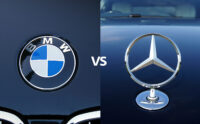How to Improve Brand Awareness
It’s no secret: for people to buy (into) a brand, they first need to know it exists. No matter an organization’s industry, geography, size, price or positioning, brand awareness is where the customer journey begins. In that regard, it is an essential benchmark for all brand stewards.

We begin at the beginning.
Beyond simply knowing of a brand, the strength of that awareness (in the aggregate, and for any one person) may be further illuminated by measuring the following subsets, listed in descending order of significance. Awareness should be evaluated within a single category (e.g. car brands).
- First mention: The brand that comes to mind first without prompting
- Second mention: The brand that comes to mind second without prompting
- Unaided: Comes to mind without prompting
- Aided: Recognized in a finite list
Brands with high first mention awareness among qualified buyers are often category leaders. But high awareness, whether aided or unaided, represents an opportunity to tell your story to more people. And thus, making gains in awareness ought to be the aspiration for any brand where growth is the goal (whether of revenue, influence, or both). To improve brand awareness, start with these five basic questions:
Question One: Who cares?
It’s time to get honest. Who is best served by your brand? Far too many companies operate as though they’re built for everybody. Few are. Customer personas are one tool to define your targets. Whatever your approach, identify your ideal buyer(s). In doing so, you can concentrate resources where you’re likely to be most attractive. With relevance comes affinity. With affinity comes attention. Serving only military members and their families, USAA has demonstrated their dedication to a narrow customer target for the past 100 years. For its focus, USAA has been rewarded with extraordinary results: about 95% of active-duty U.S. military officers are USAA members.*

Question Two: Are we recognizable?
Identity and awareness are inextricably linked. To be seen and to be known. Three qualities determine whether your identity is recognizable:
- Definite: As in, occupying a distinct place. This. Not that. Since brand identities are expressed in words, pictures, and actions (yes, sounds, smells, and tastes too), be sure that yours has been considered, defined and documented.
- Different: If your name and logo were removed from your marketing materials, would they still be identifiable as yours? Every category has its conventions. Is your identity sufficiently differentiated? If you look and sound like other brands, there’s a good chance you are hurting your awareness numbers.
- Steady: Say it with me—sustained impressions over time. Changing too much or too often undermines recognition.
Is there any brand more recognizable than Coca-Cola? Their contour bottle, signature script, and vibrant red have seen only evolutionary change since inception more than a century ago.

Question Three: Are we showing up?
With a clear picture of who you are and who they are, it’s time to show up. There’s simply no way around it: awareness is dependent on impressions. That means investing in word of mouth. Advertising. Public relations. Sponsorships. Events (virtual or otherwise). Search. All things being equal, the more you put in the more you’ll get out. Whatever your budget and mix of activities, authenticity is key. Showing up is about paying your dues (literally and figuratively). Whether your brand is remembered long after the moment passes has everything to do with where and how you show up. Red Bull does this better than anyone. They peddle “energy” in traditional ad channels, yes. More importantly, they live it through high-intensity actions and events.

Question Four: Is our budget realistic?
Awareness efforts are often limited by budget. With the appropriate targeting and a thoughtful approach to attention-getting, the dollars needn’t be great. It is not just how much, but how it’s spent. Keep these three things in mind when assessing budget:
- Be Realistic: Keep tabs on going rates. Understand the tradeoffs of low-cost providers. Ladder back up to your larger brand and business goals. Ask early and often, “What are we trying to achieve?”
- Consider Quantity and Quality: CPM (cost per thousand impressions) is a helpful tool for comparing the cost of various approaches. But far too often the quality of impressions is ignored. You know the adage: the medium is the message.
- Don’t Lose Your Nerve: Good things take time. Determine your minimum commitments before going live. Don’t neglect qualitative measures of success.
“Branding demands commitment; commitment to continual re-invention; striking chords with people to stir their emotions; and commitment to imagination. It is easy to be cynical about such things, much harder to be successful.”
—Sir Richard Branson
Question Five: How do we make them feel?
Your identity is recognizable. Your targeting is on point. Your media plan is optimized. Great. What is your message and how is it conveyed? The human brain is remarkably good at ignoring anything it deems irrelevant or benign. While most brands try to inform, emotion triggers attention and memory (not to mention, it is the emotional center that lights up during a purchasing decision). If you want more people to take notice, pay attention to the feelings your communications evoke. Nike’s definitive charge to “Just Do It” taps into the heart of the athlete. In turn, this deceptively simple phrase has endured for decades, inspiring countless iterations across sports, cultures and languages.

Measuring brand awareness is essential; concerted efforts to improve it, worthwhile. Your diagnostic efforts will benefit from a commitment to benchmarking at regular intervals, and to exploring solutions cross-functionally whenever possible (remember: customers don’t care about your org chart). Appraised alongside brand preference and loyalty, awareness gains lead to favorable engagement and transactional metrics.
References:
1 Teal, Thomas. “Service Comes First.” Harvard Business Review, Harvard Business Publishing, August 1, 2014, Accessed May 17, 2021, https://hbr.org/1991/09/service-comes-first

